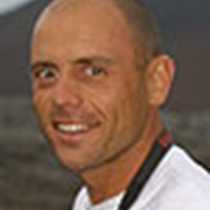Carcass Island and New Island, Falkland Islands
Today was a beautiful day to conclude our grand adventure. We cruised and hiked under blue skies and sunshine. We enjoyed Falklands hospitality and a farmhouse tea at the home of Rob McGill on Carcass Island. We saw sei whales, Peale’s and Commerson’s dolphins. And even the most committed ornithophobe could find something of interest onshore. Whether it was the sixth (magellanic) and seventh (rockhopper) species of penguin for the trip, the inquisitive but rare raptor, the striated caracara, or the nesting black-browed albatross on New Island, there was something for everyone.
And for the hardened birders, Carcass Island is a joy. As there are no native trees in the Falkland Islands, all birds must nest on the ground. As is common with many islands, birds in the Falklands have evolved in the absence of mammalian predators on land (although the now extinct warrah, a dog-like animal found here when the islands were first settled by Europeans, must be given a mention here). They are therefore highly vulnerable to the accidental or deliberate introduction of non-native predators such as rats and cats.
Carcass is a predator-free island. Neither cats nor rats have been introduced, and as a result, it is a haven for small landbirds, known to birders as ‘little brown jobs’ or ‘LBJs,’ such as this Cobb’s wren (pictured). It is endemic to the Falkland Islands and, like the South Georgia pipit, Cobb’s wren is restricted to the few remaining rat-free islands. Conservation organizations in the Falklands have been active in eradicating rats from some of the smaller islands, a positive step which will benefit not only LBJs, but also burrow nesting seabirds, invertebrates and native plants, all of which feature in the diet of the rats.
Today was a beautiful day to conclude our grand adventure. We cruised and hiked under blue skies and sunshine. We enjoyed Falklands hospitality and a farmhouse tea at the home of Rob McGill on Carcass Island. We saw sei whales, Peale’s and Commerson’s dolphins. And even the most committed ornithophobe could find something of interest onshore. Whether it was the sixth (magellanic) and seventh (rockhopper) species of penguin for the trip, the inquisitive but rare raptor, the striated caracara, or the nesting black-browed albatross on New Island, there was something for everyone.
And for the hardened birders, Carcass Island is a joy. As there are no native trees in the Falkland Islands, all birds must nest on the ground. As is common with many islands, birds in the Falklands have evolved in the absence of mammalian predators on land (although the now extinct warrah, a dog-like animal found here when the islands were first settled by Europeans, must be given a mention here). They are therefore highly vulnerable to the accidental or deliberate introduction of non-native predators such as rats and cats.
Carcass is a predator-free island. Neither cats nor rats have been introduced, and as a result, it is a haven for small landbirds, known to birders as ‘little brown jobs’ or ‘LBJs,’ such as this Cobb’s wren (pictured). It is endemic to the Falkland Islands and, like the South Georgia pipit, Cobb’s wren is restricted to the few remaining rat-free islands. Conservation organizations in the Falklands have been active in eradicating rats from some of the smaller islands, a positive step which will benefit not only LBJs, but also burrow nesting seabirds, invertebrates and native plants, all of which feature in the diet of the rats.




